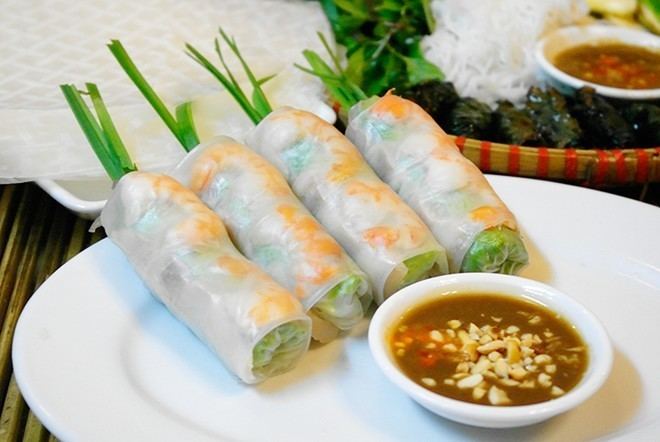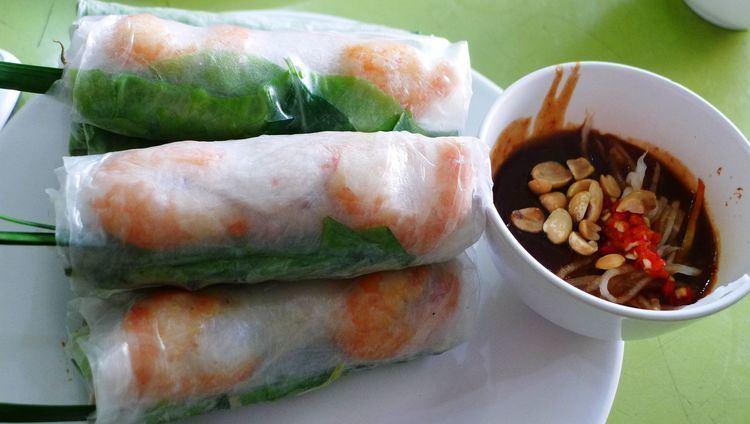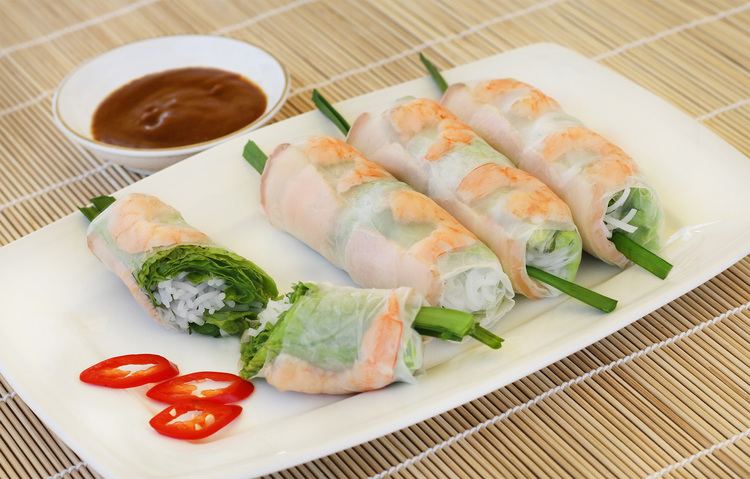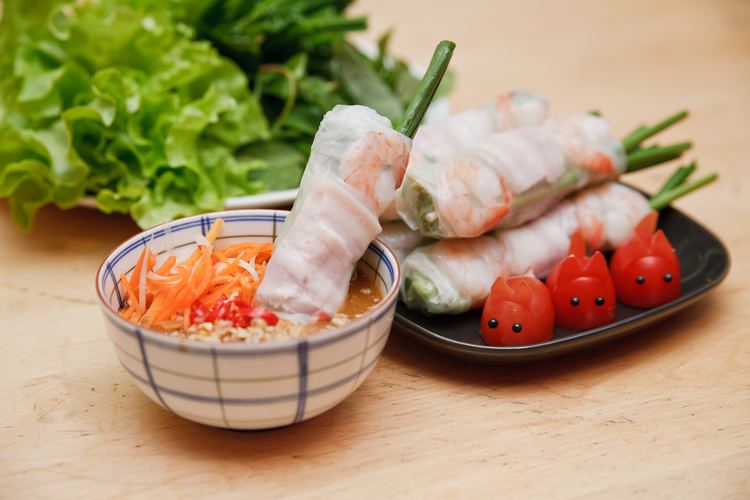Alternative names Nem cuốn, salad roll | Serving temperature Room temperature | |
 | ||
Similar Spring roll, Chả giò, Rice noodles, Pho, Rice paper | ||
Vietnamese spring rolls g i cu n honeysuckle
Gỏi cuốn, Vietnamese spring roll, is a Vietnamese dish traditionally consisting of pork, prawn, vegetables, bún (rice vermicelli), and other ingredients wrapped in Vietnamese bánh tráng (commonly known as rice paper). Some people believe that Vietnamese summer rolls originate from China since they are similar in form to Chinese spring rolls, Chinese biscuit rolls, and Chinese-American egg rolls. Others believe their origins are from Vietnam since the ingredients are different and they are served fresh while others are served fried, like the Vietnamese Chả giò. They are served at room temperature (or cooled) and are not deep fried or cooked on the outside. It is listed at number 30 on World's 50 most delicious foods compiled by CNN Go in 2011. These rolls are considered to be a very popular appetizer with customers in Vietnamese restaurants.
Contents
Preparation
The Bánh tráng (rice paper) is dipped in water, then laid flat on a plate and the desired amount of ingredients is placed on top. The fresh gỏi cuốn is then rolled up and ready to be eaten. Gỏi cuốn can be served with tương xào (also known as hoisin sauce), which consists of ground tương (tương đen or tương xay)and mixed coconut water (or broth), before being stir-fried with garlic and some sugar and then sprinkled with chili powder and ground peanuts. Alternatively, gỏi cuốn can be served with peanut sauce or other Vietnamese dipping sauces, such as nước chấm, a condiment based on fish sauce.

In Vietnam and in various parts of Southeast Asia, Vietnamese can be seen hand-making Bánh tráng (rice paper) and placing them on the rectangular bamboo trays around their houses. Traditionally, gỏi cuốn are eaten with a large group of people at a home setting.
Regional

In southern Vietnam, these rolls are called Gỏi cuốn, meaning salad rolls, while in northern Vietnam, these rolls are called Nem cuốn, meaning nem rolls. In central Vietnam, it is simply called "rice paper" roll. In the West, these rolls are called by several different English names, including "salad roll," and "summer roll." Sometimes the word "Vietnamese" is added at the beginning of these words, for example, in Hong Kong they are called "Vietnamese roll," or "Vietnamese spring rolls" in Australia and the United States, though specifically in Australia they may sometimes be referred to as "Cold rolls". Some Asian restaurants in the United States also refer to them as "crystal roll" "soft roll" or "salad roll".

Fresh rolls are easily distinguished from similar rolls by the fact that they are not fried and the ingredients used are different from (deep-fried) Vietnamese egg rolls. In Cambodia, Vietnamese gỏi cuốn are called nime chao meaning "Raw rice paper" where they are have a unique technique of production in Siem Reap and Battambang areas. Another dish called "Kuy Tieu Kat" (Cut rice noodle) are created from steaming the water mixture and adding meat vegetables and other assorted condiments. In Japan, they are called nama harumaki (生春巻き, "raw spring rolls"), and are typically filled with shrimp.
Variants

The fillings can vary from the standard pork slices, pork sausage slices (chả), and shrimp; fish, pan-fried seafood (such as squid), beef poached in a lemongrass broth, tofu (for vegetarians), grilled Nem Nướng sausages, braised pork, and egg are among some of the other popular spring roll variations.
